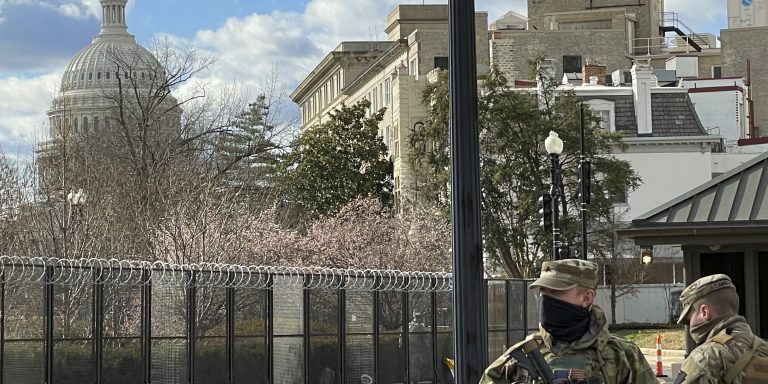INTELBRIEF
March 19, 2021
IntelBrief: ODNI Releases Report Detailing Domestic Violent Extremism Threat

Bottom Line Up Front
- Racially and ethnically motivated violent extremists and militia violent extremists are assessed to pose the most significant threat to the U.S.
- A new report by the Office of the Director of National Intelligence highlights the extent of the domestic violent extremism threat to the United States.
- The report details various forms of domestic violent extremism, while also noting that they pose an elevated threat to the U.S. homeland in 2021.
- In 2021, the violent extremism threat is more diverse than during the previous two decades, owing in part to a mix of ideologies – a “salad bar.”
A newly released unclassified report by the Office of the Direction of National Intelligence (ODNI) details the extent of the domestic violent extremism (DVE) threat to the United States. The report defines DVEs as “US-based actors who conduct or threaten activities that are dangerous to human life in violation of the criminal laws of the United States or any state; appearing to be intended to intimidate or coerce a civilian population; and influence the policy of a government by intimidation or coercion, or affect the conduct of a government by mass destruction, assassination, or kidnapping, as per the definition of domestic terrorism in 18 U.S. Code 2331 (5).” While this is not tantamount to an agreed legal definition of terrorism, it once again highlights many common elements of a definition, within the U.S. and in relevant international treaties and agreements. Many of the issues outlined in the report also echo those discussed by FBI Director Christopher Wray in his testimony before the Senate Judiciary Committee in early March.
The report itself makes an important contribution to the categorization of various threats. Recent violent extremist attacks have demonstrated that multiple drivers and ideologies can combine to compel individuals to action. The overarching category for all of the types of extremists within the United States is “DVEs”, but within that category are racially and ethnically motivated violent extremists (RMVEs); animal rights/environmental violent extremists; abortion-related extremists (in support of pro-life or pro-choice beliefs); anti-government/anti-authority violent extremists; and a category labeled as “all other domestic terrorism threats.” Within anti-government/anti-authority violent extremists, several sub-categories are listed, including militia violent extremists (MVEs), anarchist violent extremists, and sovereign citizen violent extremists. Several factors increase the possibility of DVE-related violence in the United States throughout the remainder of this year, including disinformation surrounding the November 2020 U.S. presidential election, the impact of the January 6 Capitol insurrection, conditions related to the pandemic, and conspiracy theories that promote violence. The report does not name QAnon specifically, but the conspiracy reference is a clear callout to QAnon and its adherents. Conspiracies and disinformation can serve as force multipliers for various forms of violent extremism.
In 2021, the violent extremism threat is more diverse than at any time in the previous two decades. In addition to the enduring challenge posed by Salafi jihadist groups like al-Qaeda and the so-called Islamic State, as well as their affiliates and supporters, the U.S. is grappling with what a former senior FBI official described as “salad bar” ideologies. Put simply, it appears that individuals or groups adhere to ideologies that overlap, converge, or even in some cases contradict, but nonetheless inform the belief system of extremists. The lines between left-wing and right-wing extremism are becoming blurrier, as the ideological spectrum is treated as an extremists’ buffet. Eco-fascism, where white supremacy and environmentalism converge, is a byproduct of ideological convergence, and the manifestos of the terrorists responsible for the Christchurch massacre and the El Paso attack in 2019 each contained references to this ideology. The report labels RMVEs and MVEs as the most serious threats to the U.S. homeland, while recognizing that RMVEs, including white supremacists and neo-Nazis, are the most likely to seek to attack civilians and conduct mass casualty attacks.
Violent white supremacy extremists are also assessed as the most well-connected globally, and growing connections with like-minded individuals or groups overseas increase the scale of the threat. When travel restrictions are lifted, it is likely that individuals who have spent the last year communicating with each other will travel to meet and network in person. Militia violent extremists are among the most dangerous actors because of potential military training and combat experience, weapons proficiency, and violent intent. These include groups like The Oath Keepers and the Three Percenters, who are described as more likely to target law enforcement or government targets.
DVEs will continue to communicate using various technologies, from mainstream social media platforms to more fringe sites, as well as encrypted chat applications. The ODNI also describes factors that could potentially increase the likelihood of an attack. Chief among these is a perception of government overreach by DVEs, especially anti-government/anti-authority violent extremists. When continued disinformation about election fraud intersects with strong opinions expressed by those who believe the Biden administration is illegitimate, a dangerous combination is brought forth, as evidenced by the sheer number of individuals who stormed the Capitol in early January. Finally, the potential pool of DVEs may grow, and detection will remain a challenge for law enforcement. Lone actors can radicalize independently and mobilize discretely, while maintaining easy access to firearms. This description fits several high-profile cases including the Charleston Church shooting in 2015 and the Pittsburgh synagogue attack in 2018. As domestic groups in the U.S. expand their networks and engage with likeminded individuals and groups abroad, the transnational aspects will require more cooperation among international actors, and the “DVE” threat may require a new acronym.